Related Research Articles

Cambridge University Library is the main research library of the University of Cambridge. It is the largest of over 100 libraries within the university. The library is a major scholarly resource for members of the University of Cambridge and external researchers. It is often referred to within the university as the UL. Thirty-three faculty and departmental libraries are associated with the University Library for the purpose of central governance and administration, forming "Cambridge University Libraries".

The National Library of Wales, in Aberystwyth, is the national legal deposit library of Wales and is one of the Welsh Government sponsored bodies. It is the biggest library in Wales, holding over 6.5 million books and periodicals, and the largest collections of archives, portraits, maps, and photographic images in Wales. The Library is also home to the national collection of Welsh manuscripts, the National Screen and Sound Archive of Wales, and the most comprehensive collection of paintings and topographical prints in Wales. As the primary research library and archive in Wales and one of the largest research libraries in the United Kingdom, the National Library is a member of Research Libraries UK (RLUK) and the Consortium of European Research Libraries (CERL).
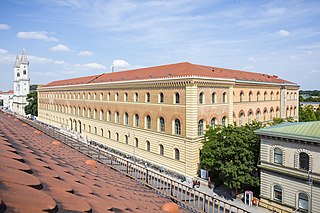
The Bavarian State Library in Munich is the central "Landesbibliothek", i. e. the state library of the Free State of Bavaria, the biggest universal and research library in Germany and one of Europe's most important universal libraries. With its collections currently comprising around 10.89 million books, it ranks among the leading research libraries worldwide. The Bayerische Staatsbibliothek furthermore is Europe's second-largest journals library. Furthermore, its historical holdings encompass one of the most important manuscript collections of the world, the largest collection of incunabula worldwide, as well as numerous further important special collections. Its collection of historical prints before 1850 totals almost one million units.

In libraries, art galleries, museums and archives, an accession number is a unique identifier assigned to, and achieving initial control of, each acquisition. Assignment of accession numbers typically occurs at the point of accessioning or cataloging. The term is something of a misnomer, because the form accession numbers take is often alpha-numeric.

The Massachusetts Historical Society (MHS) is a major historical archive specializing in early American, Massachusetts, and New England history. The Massachusetts Historical Society was established in 1791 and is located at 1154 Boylston Street in Boston, Massachusetts, and is the oldest historical society in the United States.

The Stowe Psalter is a psalter from the "2nd or 3rd quarter of the 11th century", at the end of Anglo-Saxon art. The text includes the Gallican version of the Psalms, followed by the Canticles with an interlinear Old English gloss.
Manuscripts and Special Collections is part of Libraries, Research and Learning Resources at the University of Nottingham. It is based at King's Meadow Campus in Nottingham in England. The university has been collecting manuscripts since the early 1930s and now holds approximately 3 million documents, extensive holdings of Special Collections, and the East Midlands Collection of local material, all of which are available for researchers to use in the supervised Wolfson Reading Rooms.
The Harold Pinter Archive in the British Library is the literary archive of Harold Pinter, which Pinter had first placed "on permanent loan" in the British Library in September 1993 and which became a permanent acquisition in December 2007.

The British Library is a research library in London that is the national library of the United Kingdom. It is one of the largest libraries in the world. It is estimated to contain between 170 and 200 million items from many countries. As a legal deposit library, the British Library receives copies of all books produced in the United Kingdom and Ireland, including a significant proportion of overseas titles distributed in the UK. The Library is a non-departmental public body sponsored by the Department for Culture, Media and Sport.
Robert Thornton was a Yorkshire landowner, a member of the landed gentry. His efforts as an amateur scribe and manuscript compiler resulted in the preservation of many valuable works of Middle English literature, and have given him an important place in its history.

The Bedford Master was a manuscript illuminator active in Paris during the fifteenth century. He is named for the work he did on two books illustrated for John of Lancaster, 1st Duke of Bedford between 1415 and 1435. One is the Bedford Hours, a book of hours in the British Library ; the other, the Salisbury Breviary, is in the Bibliothèque nationale de France. Another manuscript is in the Royal Collection. The Bedford Master is known to have been the head of a workshop; his chief assistant is known as the Chief Associate of the Bedford Master.
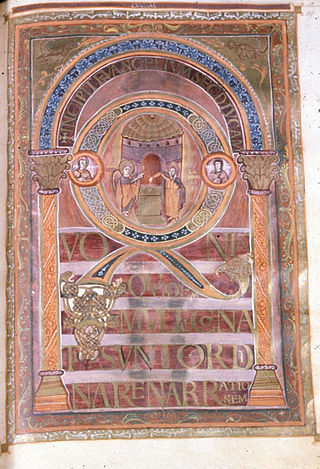
The Harleian Library, Harley Collection, Harleian Collection and other variants is one of the main "closed" collections of the British Library in London, formerly the library of the British Museum.
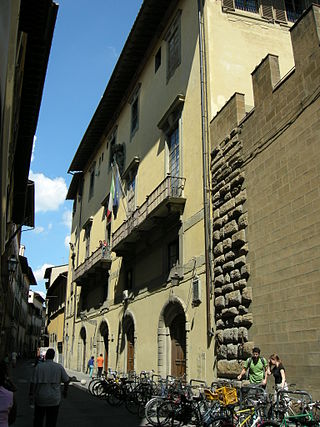
The Biblioteca Riccardiana is an Italian public library under the aegis of the Ministry of Culture, located inside the Palazzo Medici Riccardi at 10 Via de’ Ginori in Florence, in the neighborhood comprising the Mercato Centrale and the Basilica di San Lorenzo. Its main feature is preserving books collected by members of the Riccardi family and making them available in the very same rooms that were originally dedicated to that purpose. So, still today the library boasts the magnificent bookshelves, neatly carved and gilded, that create the atmosphere of a late-seventeenth-century patrician library, whose main features have all been kept intact.
Patrick Murdoch was an author, publisher and mathematician, who published a biography of poet James Thomson, and also An account of Sir Isaac Newton's philosophical discoveries by Colin MacLaurin.

The Anglo-Saxon Chronicle is a collection of annals in Old English, chronicling the history of the Anglo-Saxons.

The International Dunhuang Project (IDP) is an international collaborative effort to conserve, catalogue and digitise manuscripts, printed texts, paintings, textiles and artefacts from the Mogao caves at the Western Chinese city of Dunhuang and various other archaeological sites at the eastern end of the Silk Road. The project was established by the British Library in 1994, and now includes twenty-two institutions in twelve countries. As of 18 February 2021 the online IDP database comprised 143,290 catalogue entries and 538,821 images. Most of the manuscripts in the IDP database are texts written in Chinese, but more than fifteen different scripts and languages are represented, including Brahmi, Kharosthi, Khotanese, Sanskrit, Tangut, Tibetan, Tocharian and Old Uyghur.
The Lincoln Thornton Manuscript is a medieval manuscript compiled and copied by the fifteenth-century English scribe and landowner Robert Thornton, MS 91 in the library of Lincoln Cathedral. The manuscript is notable for containing single versions of important poems such as the Alliterative Morte Arthure and Sir Perceval of Galles, and gives evidence of the variegated literary culture of fifteenth-century England. The manuscript contains three main sections: the first one contains mainly narrative poems ; the second contains mainly religious poems and includes texts by Richard Rolle, giving evidence of works by that author which are now lost; and the third section contains a medical treatise, the Liber de diversis medicinis.
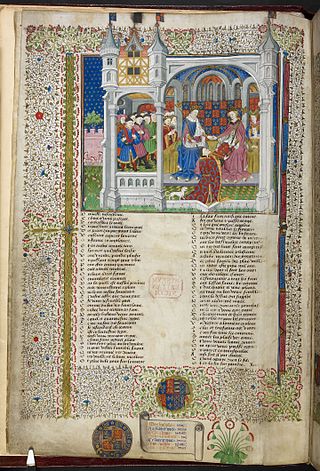
The Royal manuscripts are one of the "closed collections" of the British Library, consisting of some 2,000 manuscripts collected by the sovereigns of England in the "Old Royal Library" and given to the British Museum by George II in 1757. They are still catalogued with call numbers using the prefix "Royal" in the style "Royal MS 2. B. V". As a collection, the Royal manuscripts date back to Edward IV, though many earlier manuscripts were added to the collection before it was donated. Though the collection was therefore formed entirely after the invention of printing, luxury illuminated manuscripts continued to be commissioned by royalty in England as elsewhere until well into the 16th century. The collection was expanded under Henry VIII by confiscations in the Dissolution of the Monasteries and after the falls of Henry's ministers Cardinal Wolsey and Thomas Cromwell. Many older manuscripts were presented to monarchs as gifts; perhaps the most important manuscript in the collection, the Codex Alexandrinus, was presented to Charles I in recognition of the diplomatic efforts of his father James I to help the Eastern Orthodox churches under the rule of the Ottoman Empire. The date and means of entry into the collection can only be guessed at in many if not most cases. Now the collection is closed in the sense that no new items have been added to it since it was donated to the nation.
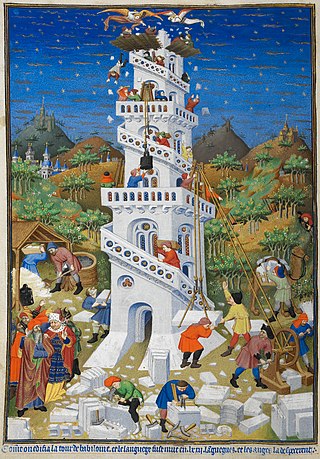
The Bedford Hours is a French late medieval book of hours. It dates to the early fifteenth century (c. 1410–30); some of its miniatures, including the portraits of the Duke and Duchess of Bedford, have been attributed to the Bedford Master and his workshop in Paris. The Duke and Duchess of Bedford gave the book to their nephew Henry VI in 1430. It is in the British Library, catalogued as Add MS 18850.

The Shirburn Ballads is the name given to an early 17th-century manuscript collection of Elizabethan to early Stuart-era ballads that formerly resided in the collection of the Earls of Macclesfield in the library at Shirburn Castle. As per the Ballad Index compiled by W.B. Olsen, it is one of a number of significant sources for ballads of that period. According to the relevant entry in the Catalogue of English Literary Manuscripts 1450–1700, the main scribe may have been Edwarde Hull, whose name appears on leaf 155. It is believed that since the current set of leaves is numbered from 98 onwards, a further initial 97 leaves were once present but were lost prior to the set's binding in 1860. The collection is mainly known to scholars via an edited version that was published by the Reverend Andrew Clark in 1907. Most or all of the included ballads derive from broadside ballad sources which were recorded as published for copyright purposes in relevant 16th-century sources, and include a subset for which the original broadside copy has not survived. Since 2007, the original work is now in the collection of the British Library.